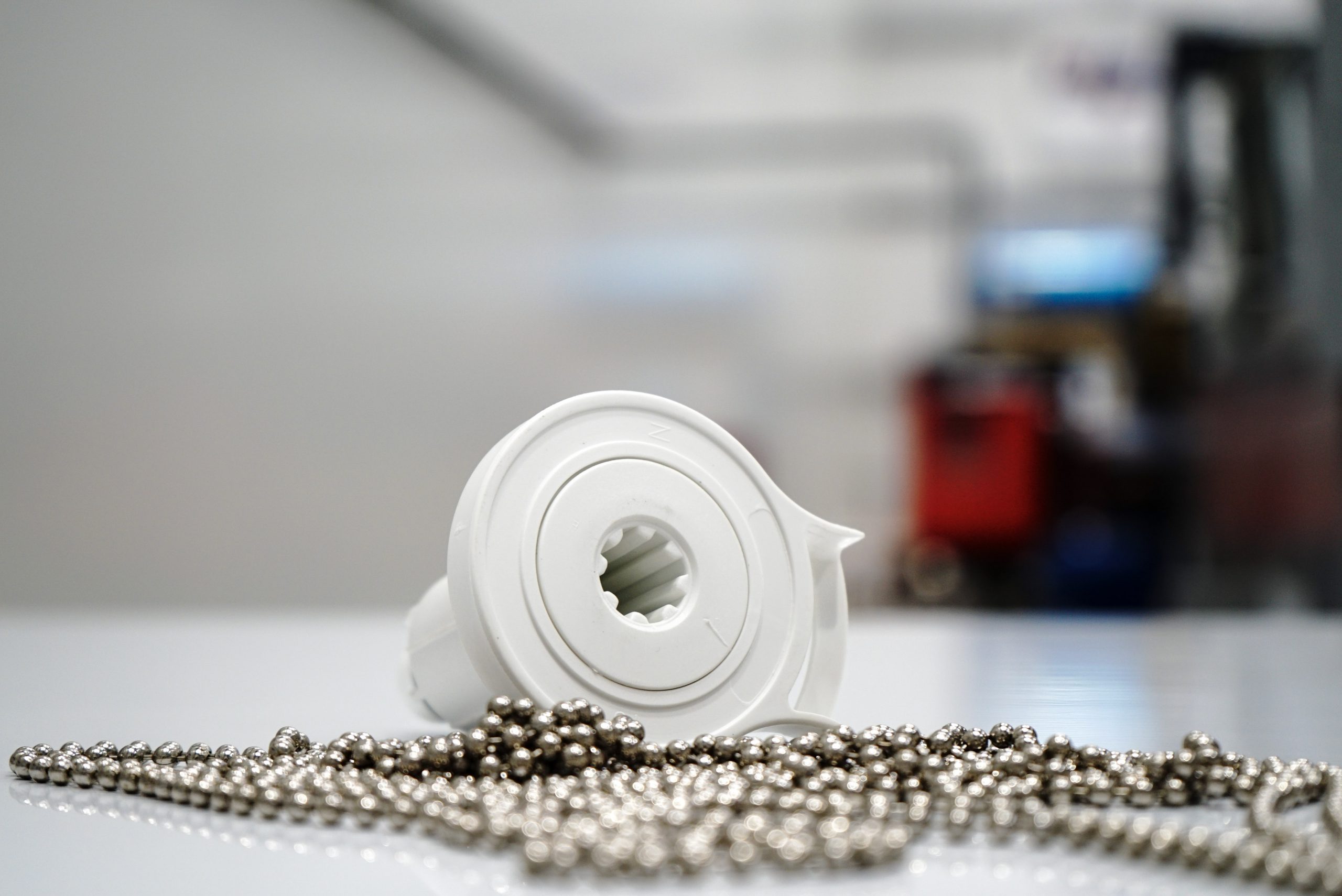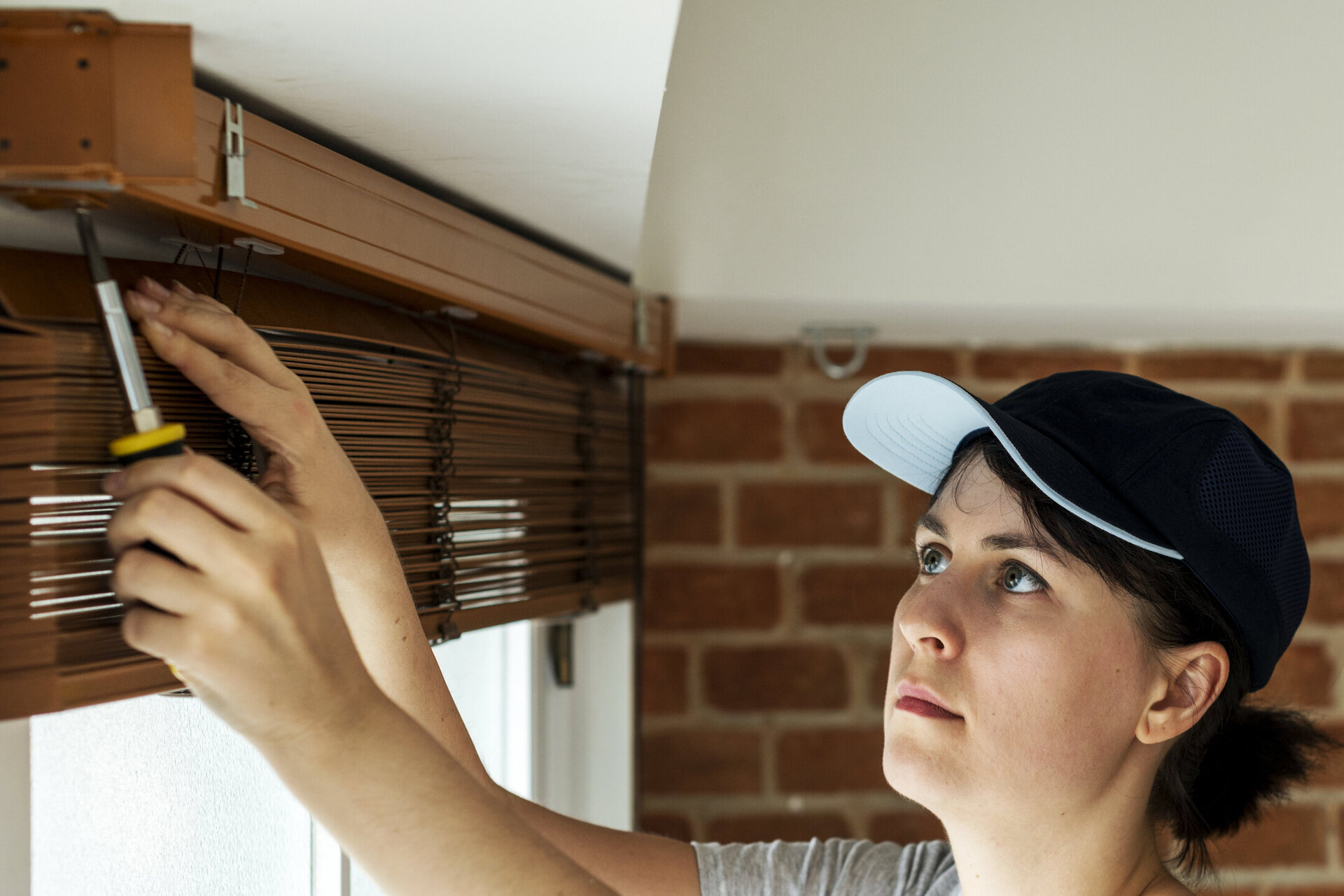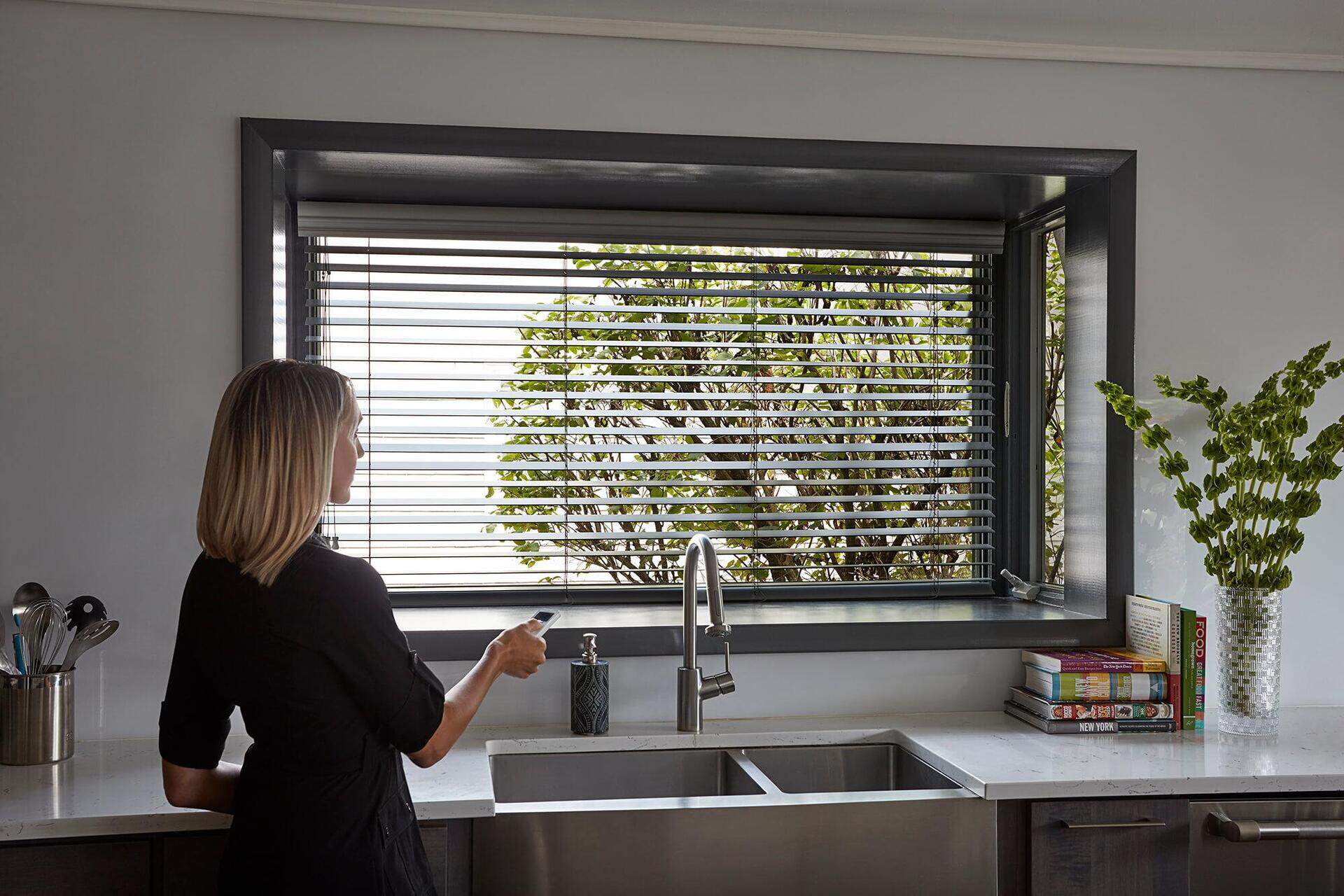

Articles
How To Measure A Refrigerator
Modified: August 17, 2024
Learn how to measure a refrigerator with our helpful articles. Get accurate dimensions to ensure a perfect fit for your kitchen.
(Many of the links in this article redirect to a specific reviewed product. Your purchase of these products through affiliate links helps to generate commission for Storables.com, at no extra cost. Learn more)
Introduction
When it comes to purchasing a new refrigerator, one of the most important aspects to consider is its size. Whether you’re replacing an old refrigerator or buying one for the first time, knowing how to measure a refrigerator accurately is crucial to ensure it fits perfectly into your kitchen space. Not only does measuring help with proper installation, but it also helps you determine if the fridge will meet your storage needs.
In this article, we will guide you through the process of measuring a refrigerator step by step, providing you with all the necessary information to make an informed decision. So, grab your measuring tape and let’s get started!
Key Takeaways:
- Ensure a seamless fit: Accurately measure the height, width, and depth of the refrigerator to ensure it fits perfectly in your kitchen space and between adjacent cabinets or appliances.
- Don’t overlook clearance space: Measure the recommended width, depth, and height clearance to maintain optimal performance, prevent overheating, and ensure proper ventilation for the refrigerator.
Read more: How To Darken A Room With Blinds
Step 1: Measure the Height
The first step in measuring a refrigerator is determining its height. This measurement is crucial as it ensures that the refrigerator will fit under any overhead cabinets or counters in your kitchen. To accurately measure the height, follow these simple steps:
- Clear the area around the refrigerator: Before you begin measuring, make sure there is enough space around the refrigerator to facilitate accurate measurements. Remove any objects or obstructions that might get in the way.
- Locate the highest point: Identify the highest point of the refrigerator. This is usually the top of the refrigerator or the hinges of the doors. You may need to open the doors fully to get an accurate measurement.
- Place the measuring tape: Position the end of your measuring tape at the base of the highest point, and extend it vertically to the floor. Ensure the tape remains straight, without any sag or bend, to get an accurate measurement.
- Read the measurement: Once the tape is at the floor, take note of the measurement in either inches or centimeters. This measurement represents the height of the refrigerator.
Remember to take multiple height measurements at different points of the refrigerator to ensure accuracy. Record the highest measurement to ensure compatibility with your kitchen space.
Note: If your refrigerator has adjustable legs, make sure to adjust them to the desired height before measuring. This will give you an accurate measurement for the refrigerator’s proper placement.
Step 2: Measure the Width
After measuring the height of the refrigerator, the next step is to measure its width. Knowing the width is essential to ensure that the refrigerator fits properly between adjacent cabinets or other appliances in your kitchen. Here’s how you can measure the width of the refrigerator accurately:
- Clear the surrounding area: Before measuring, remove any objects or obstacles that may interfere with taking accurate measurements. Make sure there is enough space around the refrigerator for ease of measurement.
- Locate the widest point: Identify the widest part of the refrigerator. This is typically the outermost edge of the refrigerator, including any handles or protrusions.
- Place the measuring tape: Position one end of your measuring tape at the outermost edge of the refrigerator and extend it horizontally across the width. Ensure the tape remains straight and level throughout the measurement.
- Note the measurement: Once the tape is positioned correctly, read the measurement in inches or centimeters. This measurement represents the width of the refrigerator.
It’s important to take multiple width measurements at different points to ensure accuracy. Record the widest measurement to ensure compatibility with the available space in your kitchen.
Remember to consider any additional clearance that may be required for the refrigerator doors to open fully without obstruction. This is especially important if the refrigerator will be placed in a tight space or near walls or cabinets.
Note: Some refrigerators come with adjustable or removable door handles. If your refrigerator has these features, make sure to remove or adjust them before measuring the width to avoid any miscalculations.
Step 3: Measure the Depth
Measuring the depth of a refrigerator is crucial to ensure it fits properly into the designated space in your kitchen. By accurately measuring the depth, you can determine if the refrigerator will protrude too far or if it will fit seamlessly into your existing cabinetry. Follow these steps to measure the depth of your refrigerator:
- Clear the area around the refrigerator: Remove any objects or obstructions from the surrounding area to enable an accurate measurement of the refrigerator’s depth.
- Locate the deepest point: Identify the deepest part of the refrigerator. This is typically at the back wall, excluding any handles or other protrusions.
- Place the measuring tape: Position one end of the measuring tape at the back wall of the refrigerator and extend it horizontally to the front of the refrigerator’s door. Ensure that the tape is level and does not sag or bend.
- Note the measurement: Once the tape is correctly positioned, read the measurement in inches or centimeters. This measurement represents the depth of the refrigerator.
Remember to take multiple depth measurements at different points to ensure accuracy. In some cases, the refrigerator’s depth may vary based on the location of the compressor or other components at the back. It’s best to consider the deepest measurement to ensure a proper fit.
It’s also important to take into account any additional space required for the refrigerator’s doors to open fully and for ventilation purposes. This will prevent any restrictions or overheating issues.
Note: If you are measuring for a counter-depth refrigerator, follow the same steps but ensure that the depth measurement takes into account the exact depth of your countertop as well. This will help achieve a seamless and flush installation.
When measuring a refrigerator, be sure to measure the height, width, and depth of the space where the refrigerator will be placed to ensure a proper fit. Also, consider the clearance needed for the doors to open fully.
Step 4: Measure the Interior Space
In addition to measuring the external dimensions of a refrigerator, it’s also essential to measure the interior space to ensure it meets your storage needs. By accurately measuring the interior capacity, you can determine if the refrigerator has enough room to store your groceries and other items. Follow these steps to measure the interior space of the refrigerator:
- Empty the refrigerator: Before measuring, remove all items from the refrigerator, including shelves, drawers, and any other removable components.
- Measure the height: Using a measuring tape, measure the height of the interior space from the bottom to the top. Make sure to measure at different points to account for any irregularities in the interior dimensions.
- Measure the width: Next, measure the width of the interior space from side to side. Again, take multiple measurements at various points to ensure accuracy.
- Measure the depth: Finally, measure the depth of the interior space from the back wall to the front. Take multiple measurements to account for any variations in depth.
It’s important to note that the interior measurements may differ slightly from the external dimensions due to insulation and other factors. By measuring the interior space, you can determine the usable storage capacity of the refrigerator.
Consider your specific storage needs, such as the ability to accommodate tall items or specific food categories, while evaluating the interior space measurements. This will help you determine if the refrigerator can adequately store your groceries and meet your requirements.
Read more: How To Fix Pleated Blinds
Step 5: Measure the Clearance Space
Measuring the clearance space is an often overlooked step when it comes to measuring a refrigerator, but it is equally important. The clearance space refers to the space necessary around the refrigerator for proper ventilation and ease of use. Here’s how you can measure the clearance space:
- Determine the recommended clearance: Check the manufacturer’s guidelines or the refrigerator’s user manual to find the recommended clearance space. This will ensure that the refrigerator operates efficiently without any ventilation or heat issues.
- Measure the width clearance: Start by measuring the width clearance on both sides of the refrigerator. This measurement should include any additional space required for the refrigerator’s doors to swing open fully without any obstructions.
- Measure the depth clearance: Next, measure the depth clearance at the back of the refrigerator. This clearance is important to allow proper airflow and prevent the refrigerator from overheating. Consider any ventilation requirements mentioned in the manufacturer’s guidelines.
- Measure the height clearance: Finally, measure the height clearance above the refrigerator. This ensures that there is enough space for the heat to dissipate and allows for any maintenance or repairs that may be required in the future.
It’s crucial to follow the manufacturer’s recommended clearance guidelines to maintain optimal performance and longevity of the refrigerator. Failing to provide adequate clearance may result in reduced efficiency, increased energy consumption, and even potential damage to the appliance.
Additionally, it’s important to consider the surrounding area when measuring the clearance space. Ensure that there are no obstructions such as cabinets, walls, or other appliances that could hinder the proper functioning of the refrigerator.
Conclusion
Measuring a refrigerator is a crucial step in the purchasing process to ensure it fits seamlessly into your kitchen space and meets your storage needs. By following the step-by-step guide provided in this article, you can accurately measure the height, width, depth, interior space, and clearance space of a refrigerator. These measurements will help you make an informed decision and ensure a proper fit and functionality of the appliance.
Remember to take multiple measurements at different points to ensure accuracy, and consider any additional clearance requirements for the refrigerator’s doors to swing open fully. Additionally, consult the manufacturer’s guidelines and user manual regarding the recommended clearance space and ventilation requirements.
Measuring a refrigerator may seem like a simple task, but it is essential to avoid any unnecessary complications during installation and usage. By following these steps and carefully considering the measurements, you can confidently choose a refrigerator that perfectly fits your kitchen and meets your storage needs.
So, grab your measuring tape, clear the space, and take accurate measurements to find the refrigerator that brings both functionality and style to your kitchen.
Frequently Asked Questions about How To Measure A Refrigerator
Was this page helpful?
At Storables.com, we guarantee accurate and reliable information. Our content, validated by Expert Board Contributors, is crafted following stringent Editorial Policies. We're committed to providing you with well-researched, expert-backed insights for all your informational needs.















0 thoughts on “How To Measure A Refrigerator”